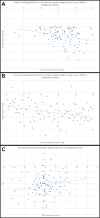This is a preprint.
Bile acid dysmetabolism in Bangladeshi infants is associated with poor linear growth, enteric inflammation, and small intestine bacterial overgrowth
- PMID: 39973996
- PMCID: PMC11838691
- DOI: 10.1101/2025.02.04.25321650
Bile acid dysmetabolism in Bangladeshi infants is associated with poor linear growth, enteric inflammation, and small intestine bacterial overgrowth
Abstract
Introduction: Environmental enteric dysfunction (EED) is a subclinical condition caused by fecal-oral contamination leading to enteric inflammation and dysbiosis. This study investigates bile acid metabolism in Bangladeshi children with EED and its association with growth impairment.
Methods: We conducted a cross sectional study of 100 Bangladeshi infants (aged 6-9 months) and quantified serum and fecal bile acids using LC-MS/MS. We compared profiles to a control group of 6 American children (6 - 12 months) and 80 older Bangladeshi children (aged 2 years).
Results: Bangladeshi infants had higher levels of plasma unconjugated primary (65.23% vs. 44.25%, p = .003) and sulfated primary bile acids (12.98% vs. <0.001%, p = .01), with lower primary conjugated bile acids (0.69% vs 2.74%, p = <0.001) compared to American children. Stool unconjugated primary bile acids were inversely associated with weight-for-age (regression coefficient [β] = -0.01, p = 0.01) and height-for-age z scores (β = -0.01, p = 0.03). Conjugated secondary bile acids were inversely associated with small intestine bacterial overgrowth (β = -1096.68, p = 0.05). Fecal myeloperoxidase was associated with sulfated secondary bile acids (β = -0.40, p = 0.04). Compared to 2-year-old children, the Bangladeshi infant's serum had higher levels of unconjugated primary bile acids (65.23% vs. 9.20%, p = <0.001) and lower levels of primary conjugated bile acids (0.69% vs 80.38%, p = <0.001).
Discussion: Our data suggests an age-dependent defect in conjugation of primary bile acids in Bangladeshi children with compensatory hydrophilic shunting. Additionally, bile acid profiles are associated with intestinal overgrowth.
Figures






Similar articles
-
Bile Acid Profiling Reveals Distinct Signatures in Undernourished Children with Environmental Enteric Dysfunction.J Nutr. 2021 Dec 3;151(12):3689-3700. doi: 10.1093/jn/nxab321. J Nutr. 2021. PMID: 34718665 Free PMC article. Clinical Trial.
-
Small Intestine Bacterial Overgrowth and Environmental Enteropathy in Bangladeshi Children.mBio. 2016 Jan 12;7(1):e02102-15. doi: 10.1128/mBio.02102-15. mBio. 2016. PMID: 26758185 Free PMC article.
-
Environmental enteric dysfunction and systemic inflammation predict reduced weight but not length gain in rural Bangladeshi children.Br J Nutr. 2018 Feb;119(4):407-414. doi: 10.1017/S0007114517003683. Br J Nutr. 2018. PMID: 29498344 Clinical Trial.
-
Bile acid solubility and precipitation in vitro and in vivo: the role of conjugation, pH, and Ca2+ ions.J Lipid Res. 1992 May;33(5):617-26. J Lipid Res. 1992. PMID: 1619357 Review.
-
Bile acids and the gut microbiome.Curr Opin Gastroenterol. 2014 May;30(3):332-8. doi: 10.1097/MOG.0000000000000057. Curr Opin Gastroenterol. 2014. PMID: 24625896 Free PMC article. Review.
References
Publication types
Grants and funding
LinkOut - more resources
Full Text Sources
Research Materials
